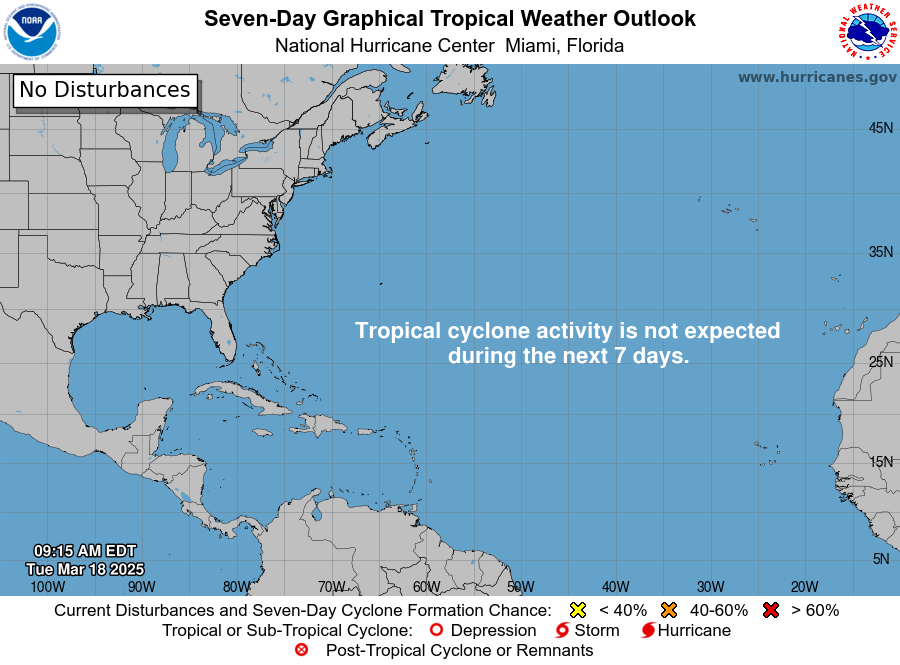Hurricane Information
Hurricane Season is from June 1 to November 30. The graphics below may not update out-of-season.
Hurricane "Invests"
The term "Invest" (short for Investigation) is followed by the numbers 90 through 99 and either the letter "L" for the Atlantic basin systems or "E" for the eastern Pacific systems. By designating a tropical weather system as an "Invest", the collection of specialized data sets and computer model guidance on the area of interest can begin. This collection and processing of data is shown on a number of government and academic websites for analyzing. The "Invest" assignment does not correspond to how likely a system may develop into a tropical depression or storm.
Hurricane Satellite - Atlantic Ocean View
Hurricane Forecast - Atlantic Ocean 2-Day Outlook
Hurricane Forecast - Atlantic Ocean 7-Day Outlook

Hurricane Tracking Links
National Hurricane Center
Cycloane
Mike's Weather Page
Tropical Tidbits
Moderating Factors to Hurricane Development
Saharan Dust or the Saharan Air Layer (SAL) often acts to inhibit tropical development. More information and tracking of the SAL can be found at the Glossary > Q-T > Saharan Dust.




